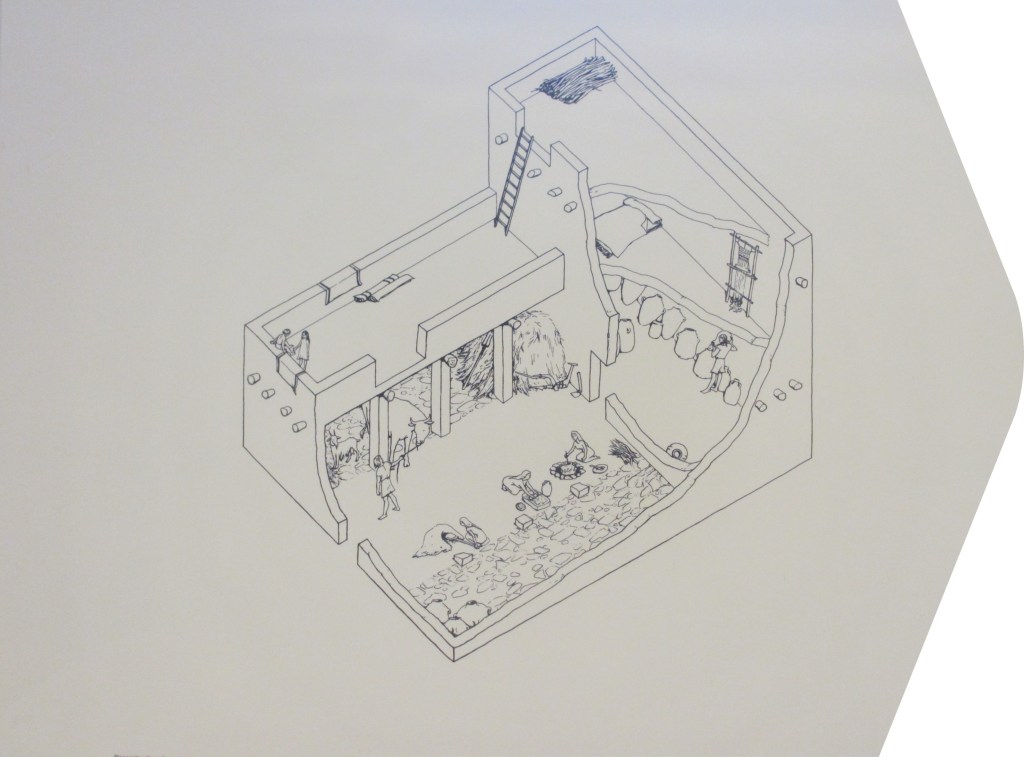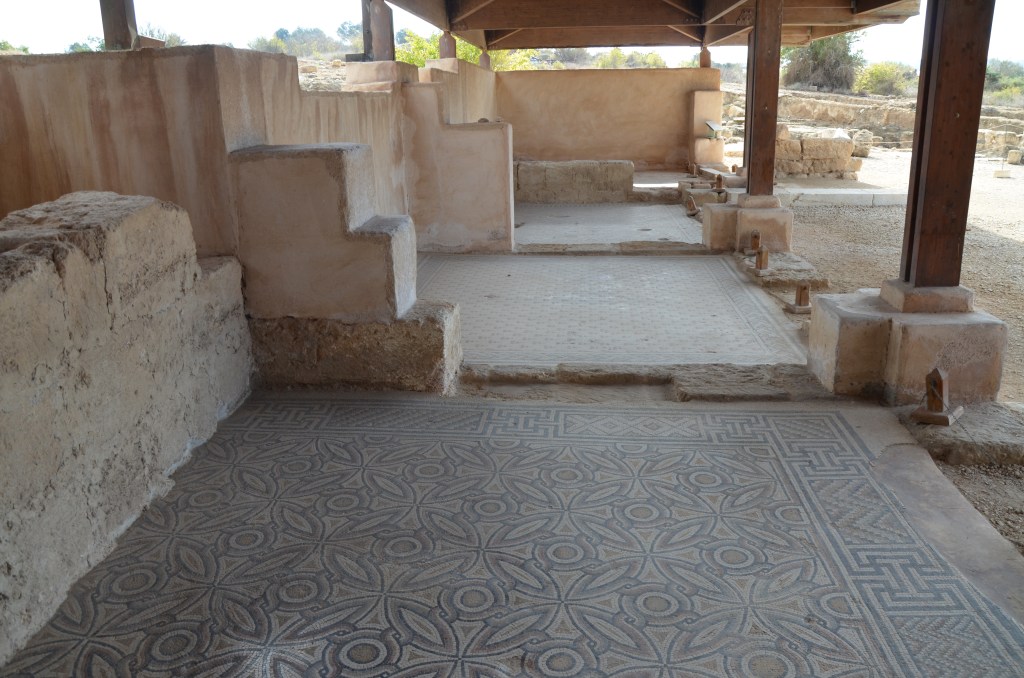Test your knowledge of houses in the Bible! (Click for the Quiz)
Take a moment and think about all the different houses you have lived in. I have lived in some pretty unique houses. I lived in a screened in house on stilts in the Amazon. I grew up in a solar-heated house in Georgia that had a very unique design. I’ve lived in dorms and trailers. Currently, I live in an 80-year-old house that we are renovating.


In the Bible, people lived in all sorts of homes. The typical house in ancient Israel was constructed with mud or stone. They were used for sleeping, storage, schools and even churches. God promised to give the ancient Israelites houses that were ready to live in, and Jesus used this as a metaphor for our home in heaven. It is an eternal home that God is building for us.
Houses in Ancient Israel
Common houses in Israel were usually made with mud. They used the mud as a mortar to hold field stones (or sticks) forming the wall. A white plaster made of limestone dust or mud was smoothed over the walls.

“Four room house. Israel Museum, Jerusalem.” 5 May 2013.
CC BY-SA 3.0. Wikimedia Commons
A typical Israelite house had four rooms. This layout was so common, archeologists call it the “Israelite four-room house.” This was the standard building layout from the time of the Judges through the diaspora, when Babylon conquered Jerusalem.
The door or gate let into a central open air courtyard. This would hold the cooking fire, water storage, and sometimes fruit trees. Two side rooms were enclosed on either side of the courtyard. These were used for livestock and storage. It was common practice to have livestock living in the house. 2 Samuel 12:3 mentions that lambs were a part of the household. The sleeping room would be at the back. The whole family slept together in the same room. Jesus told a parable about a man who grumbled about getting a late-night caller. He said “my children are in bed with me.” (Luke 11:7) Mats were the most common beds, rolled up and stored in niches in the walls. Jesus told the man he healed to “take up your bed (or mat) and walk.” (Mark 2:9) A couch, or divan, would double as seating space during the day and a bed at night. Narrow windows high in the wall would be open or have wood shutters or lattice. The inner rooms would be lit by lamps, so they were dark and smoky. Roofs were flat and were often used as another room.
The problem with the common four-room mud house? They tended to fall apart without constant maintenance. Rain can cause the mud to “melt.” Hot heat caused the mud to dry out and crumble. Walls would often collapse. They were also easy to break into. Jesus warns us about storing our treasures here on earth where thieves break in and steal. The word for burglar in Greek literally means “wall breaker.” Windows were too high to crawl through, so the thief would just punch through the crumbly mud wall.
Houses in Greco-Roman Israel
During the time of Jesus, houses in the villages remained similar to the four-room house, although the wealthier homes would follow the Roman style of building around a central courtyard. Most Israelite homes had a cistern for water and for washing.
Houses in the cities were often made of cut stone. In Galilee, this was basalt and limestone. Stone houses could support a second or third story. These “upper rooms” would take advantage of any cool breezes. These rooms could be accessed by wooden ladder or steps, and were often used as guest rooms, or rooms to host gatherings. The floors of wealthier homes would be tiled in mosaics, and the walls frescoed.

CC BY-SA 2.0 https://creativecommons.org/licenses/by-sa/2.0, via Wikimedia Commons
There have been extensive excavations done in the city of Sepphoris, which is located 4 miles from Nazareth. This was a prominent city in Galilee that is not mentioned in the gospels. It was a cosmopolitan city of 8,000 -12,000 people. From the archeology of Sepphoris, we see houses of luxury like royal palaces. (Luke 7:25) The Cambridge History of Judaism by William Horbury and John Sturdy (Google Books, 180) describes the large roman villas of Sepphoris as condominiums or apartment dwellings. They had many rooms for differing activities and large households. Some speculate that Jesus worked as a builder in this city, since it was less than an hour’s walk from his home village.
Ancient houses were used for shelter and teaching.
Today, we spend a lot of time in our houses. But, in ancient times, a house was primarily used as a shelter. It kept goods, family and livestock safe from thieves and occasional rain. Since the weather was warm, most of life happened out of doors. Business was conducted in the market and street. In the Roman apartment dwellings, people only went home at night to sleep, and spent the day in the streets of the city.
A Jewish house was also used as a place for teaching God’s Word. Many synagogues were located in the Rabbi’s house. Each family believed they should teach their children God’s law at home. They took the words of God in Deuteronomy 6 literally and kept a small portion of God’s law on their doorposts in a decorated container called a mezuzah. In the Roman era, homes were also the location of the church. (Acts 18:7) The central courtyard of a Roman home provided ample room for believers to gather together.
Heaven is a home not built with human hands.
In the last lesson on tents, we discovered that the Israelites have a history with living in tents. They link dwelling in temporary housing with being delivered by God from Egypt. During this portion of Israel’s history, God always pointed them toward his promise of giving them the land of Canaan as fulfillment of his covenant with their ancestor Abraham.
In Deuteronomy 6:10-11, God describes life in this promised land. Relevant for our lesson today is that God says he will give them houses that they did not build. God is giving them the picture of not only giving them land, but also providing for their every need. They would be moving in to homes already built and furnished, gardens already planted, well-established vineyards, and fortified cities.
Going to the promised land would be like going home. 2 Corinthians 5:1 uses this same language to describe the eternal dwelling waiting for us once we leave our “tent” here on earth. Heaven is described as a house not built with human hands. It is built by God. Like the Jews, we are promised a dwelling that we did not build. It is a dwelling that God will provide. He promises us a home with him.
The Bible encourages people of faith to look towards eternal life as a house God is building for you. Jesus picks up this theme with his close friends in John 14. Jesus is in the upper room at Passover the night before his death. He is preparing his friends for what is about to happen to him, and they are deeply troubled.
He says, “Don’t let your hearts be troubled. Believe in God and in me. In my father’s house are many rooms. If it were not so, would I have told you that I am going to prepare a place for you? And if I go and prepare a place for you, I will come back and take you to be with me that you also may be where I am.” John 14:1-4
Jesus wants us to picture eternal life as living with God in a large villa, perhaps like those found in the city of Sepphoris that are described as a sprawling condo. It is not something we can work to build. It is given to us by God.
In the house that I live in right now, the one built in 1938, we are busy with all sorts of projects. It feels as if things are never finished and I’m always dreaming of what it will be like to be DONE. But then I know that we will never be completely done, because things are always falling apart and the work we do never lasts. God wants us to understand that our lives in this body is temporary. But not to worry, he is providing a-ready-made home for us with him that will last forever. It will never need renovating or improvement. It is complete forever.
Jesus wants us to picture eternal life as living with God in a large villa, perhaps like those found in the city of Sepporis that are described as a sprawling condo. It is not something we can work to build. It is given to us by God.
Tweet
Download Notes for this Lesson
Further Reading
Murray, Danna. “The Four-Room House.” Ancient History Encyclopedia. November 2, 2014.
Punton, Anne. The World Jesus Knew. London: Monarch Books. 1996. 48, 119-121.
Reed, Jonathan L.. The Harper Collins Visual Guide to the New Testament: What Archeology Reveals about the First Christians. Harper Collins, 2007. 67-77.
Lemke, Steve. “House Construction in the First Century.”

